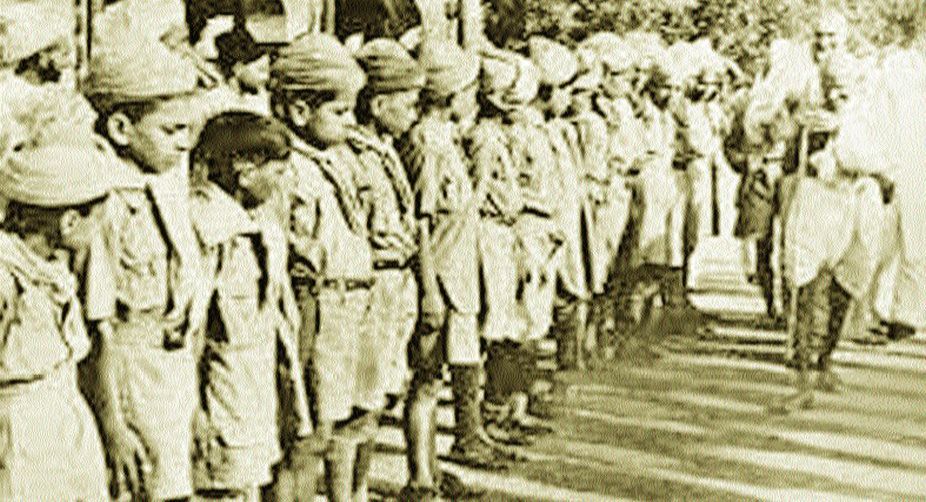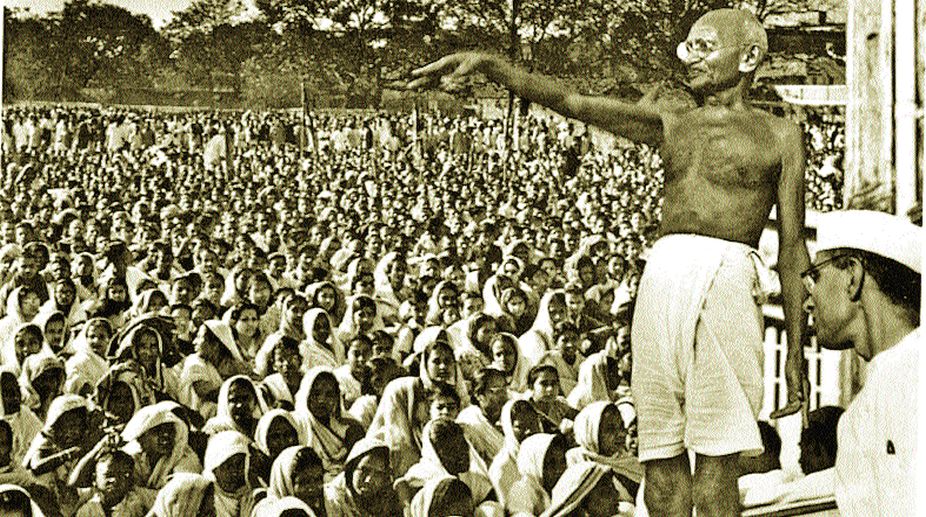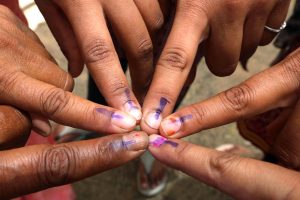A few days back, while sorting out the donated books at the library of “Gift a Library” project, I stumbled upon a treasure. For a couple of seconds, I was unable to believe that I was actually holding a piece of Indian History that marked the beginning of New India. In front of me was an old yellowed newspaper with saffron typesetting declaring “Political Freedom for One-Fifth of Human Race- Power assumed by Indians”.
The view filled me with patriotic love, much more than the 52 seconds of our national anthem played before each movie at the cinema halls these days where my focus has always been on keeping my nachos and coke from falling off while I struggle standing straight with them.
It was “The Statesman of 15th August 1947”, one of the most precious newspapers in the Indian History. Goosebumps prickled my skin as I felt an indescribable thrill at my precious find. Excited to read what exactly might have happened on that golden day and how the country celebrated and welcomed their long-sought freedom, I rushed back home with it, to have a better look at it.
Advertisement

The paper worth two annas then, was quite thick and had endured well, in a similar way we Indians stood in front of the British for our independence. I carefully spread the newsprint on a desk and started reading it. “Two Dominions Are Born”, said the front-page headline. Several other headings expressed the ultimate joy of citizens of India seventy years back. But the news of celebrations by Hindu and Muslims alike was what took my attention.
The staff reporter wrote how “Remarkable signs of communal amity after a year of bloodshed were seen in Calcutta last night and early this morning”. He further wrote that “The city, till an early hour this morning, resounded to cries of “Hindi Muslim Ek Ho”, “Jai Hind”, Bande Mataram” and “Inquilab Zindabad”.
But though there were victory songs all over, there were pangs of separation too, felt by one and all as visible in a caption that said, “ Patel sure that India will be reunited”. In his plea to the nation for universal co-operation he reminds us, “Let us not forget, in the joy of the hour, the stupendous responsibilities, and obligations which freedom has brought in its wake”. I wondered if the current generation truly understands and values the fruits of the struggle which we are enjoying currently and taking for granted every minute.
At midnight, on 15 August 1947, India became an independent nation, and Jawaharlal Nehru delivered the ‘Tryst with destiny’ speech proclaiming India’s independence. In the capital, the flag of the British Union was lowered and the tricolour flag was hoisted. ‘Down, Down the Union and Up Up the tricolour flag’ was the slogan. Gandhiji in Calcutta observed a 24 hour fast to celebrate this day. Mr. C. Rajagopalachari assumed charge of the office of Governor of West Bengal followed by Dr. P.C Ghosh being sworn in as the Chief Minister of Bengal.

First Cabinetry of India, to be headed by Pundit Nehru was also listed on the first page and amongst the eminent freedom fighters like Sardar Patel, Dr. Rajendra Prasad, Maulana Azad, I was glad to find the name of Rajkumari Amrit Kaur too. Though I felt why only one lady was included in the first cabinet, it amazed me when I found out more about her.
She was not only the first health minister of India and served for 10 years, she was also the president of World Health assembly (she was the first woman and the first Asian to hold that post), chairperson of the Indian Red Cross and initiator of the Tuberculosis Association of India. On the very same day, Sarojini Naidu also was appointed as the first governor of United Provinces (now Uttar Pradesh).
However, I never knew who Rafi Ahmed Kidwai was till I came across his name in this precious paper, though being from Calcutta I had many times crossed the road that was named after his name. Well, Mr. Rafi Ahmed Kidwai, as I found out was the first Communication Cabinet minister of the Indian Dominion.
A four-line news about Viscount Mountbatten, Governor-general designate of India getting Earldom a day before reminded me of his role in the independence of India and Pakistan, which eventually annoyed Churchill. An article in the newspaper applauded Lord Mountbatten’s skills, ideals, and statesmanship that helped India attain its freedom.
Pictures of Mr. S.C Roy Chowdhury, Mayor of Kolkata at Dum Dum, waiting for Mr. C. Rajagopalachari on the left side of the paper and a photograph of Mr. Rajagopalachari at Government house with Sir Frederick Burrows, the retiring Governor of West Bengal adorned the first page.Celebrations prevailed in the next pages of the volume CXIII. No. 23112 newspaper too.
While Air India announced a nonstop Viking service from Calcutta to Delhi, New Empire and Lighthouse announced Independence week attractions. The plethora of cinema halls like Tiger, Metro, Minerva, The Regal and Globe, (most of which don’t even exist now) screened mostly English films. Only Purna Cinema hall sanctified the birth of new India by showing Indian films like “Udayer Pathe” (towards rising) and “Jatayu Netaji” (a film on Subash Chandra Bose).
The Grand Hotel invited patrons to be at the Palm Court at 6 pm for a musical evening and at Prince’s for an ‘a la carte’ dinner with cabaret. At Great Eastern Hotel that day many might have turned up in their national or European evening dress for a celebration dance while Tibor Stary and his versatile orchestra performed.
Many would have heard the zero hour “Tryst with destiny” speech in Nehruji’s voice on a Stewart Warner Radio. It seemed an amazing mix of British culture still imbibed deep and the Indian culture that had just made a grand comeback.
Various companies like Tata Industries, Godrej, Jayashree Potteries, Hindustan Motors Limited and United Commercial Bank wished ‘Happy Independence Day’ to the country through the newspaper.
Trying to look through ‘binoculars of time’ I imagined the delight of the paperboy who must have handed this paper to an equally enthusiastic citizen wafting in a happy breeze on that cloudy Friday. Tricolour flags must have been sold in dozens as medals of success and liberty. To herald the new India conch shells, bells and shouting of slogans must have been heard.

The entire country must have been decorated with tricolour pennants, earthen lamps, and multicolored bulbs just like it would have been on the day of Diwali. I heard that trams in Kolkata ran for free carrying people throughout the day. Gate of Governor House was opened for the first time for one and all.
People went inside as the Governor was having breakfast with his wife. Feeling free for the first-time people did as they liked, spoiling paintings and jumping on the rugs. People wore khaki and cap to have a feeling of free Indian.
National songs like ‘Vande Mataram’, ‘Kadam Kadam Badhaye Ja’, and ‘Jana Gana Mana’ were sung throughout the country and sweets were distributed at every school. In the absence of television, families gathered close to All India Radio, stayed up all night to sing and dance.
Now nearly 70 years later we walk, talk, eat and do things freely without even thinking for a moment that our ancestors once had to fight even for their basic human rights. But we should never forget that that bondage from a foreign country is not the only thing that enslaves us.
As Rajendra Prasad, rightly said “India must conquer privation, disease and hunger”, our country would be actually a free nation only if we all learn to rise up from our personal greed and think of India as a big family of our own.
The writer is director, kuchina chimney
Advertisement












